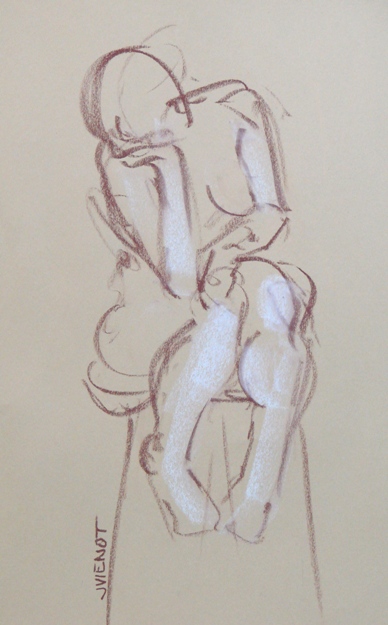
Sometimes I am bone tired when I get to my regular weekly figure drawing session after a full day of work. Last night was like that. But it never fails, after the first half hour of drawing, I am energized again. Is it me? Is it being in the good company of other like-minded artists, like Betty Cork and Steve Wagner and Heather Clements? Is it the amazing creative atmosphere of Colleen Duffley‘s Studio b.? All of the above, I suppose, plus a model who is invested in the process, who works hard for us, as all of our models do.
After the usual series of warm-up gestures from 30-seconds to a few minutes, figure drawing instructor Heather Clements suggested that we focus on where the figure was showing tension, and where it was showing relaxation, and to draw the two aspects differently, perhaps exaggerating the contrast between the two. She suggested that the parts of the figure under tension might be drawn with straighter, shorter lines and more angular shapes, with more abrupt changes in quality and direction, while the more relaxed parts would be smoother, with longer lines and less angular shapes. I can’t say that my drawings actually show that intention, but I was trying to be conscious of it as I drew. As always when I am learning something new, I will have to sit down and do some practice drawings, thinking about it non-stop, in order for it to become habit.
I have posted some of my gestures and drawings from throughout the evening. Nupastel and graphite are still my favorite media. A close floodlight, positioned low, put strong highlights and dark cast-shadows on the model.
 |
 |
 |
 |
 |




 This week in Figure Drawing at
This week in Figure Drawing at 






